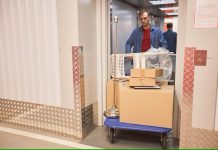Shopping for a Restaurant POS Software can be a difficult task. You might not know where to start when there are so many point-of-sale solutions available.
You don’t want your new POS Software to be purchased last-minute. It is important to take the time to compare and contrast the features and functions of all the Software that you are considering purchasing. It can take some time for your Software to be installed and for you to learn the POS software. This process should take around 3-4 weeks.
You’ll need to ensure that the point of sale system you choose is the right fit for your restaurant. If you own a restaurant or bar, you may not want a POS Software that is only for small cafes. While the two systems might look identical with a touchscreen display, the software that runs the front and back of the house could be totally different.
We know that not all POS Software are the same. So, we’ve compiled a list of the 10 most important features in a restaurant POS Software.
1. SPEEDY INTERFACE & QUICK CHECKOUT
Speed is a key feature of a POS restaurant or bar. A slow system is not an option when you are busy on Friday night or Saturday morning. Most tablet systems today depend on how fast your internet is. If you have slow internet, you are likely to have a slow point-of-sale (POS) too.
You should also find out whether your system is local, internet-based, or hybrid (local/internet). For busy restaurants, a local or hybrid system is more reliable than an internet-based point of sales. You need to choose wisely in order to maximize your speed.
2. EASY TO MANAGE
There are many Software that can manage your bar or restaurant. Finding the right balance between the features you require and those you don’t is difficult. You might want the Cadillac Software, but will you really need hundreds of features that you won’t use? The rule of thumb is that the more money you spend on a system the more difficult it can be to manage.
You can see that some systems from big brands are very difficult to program and use. A professional will be required to help you install them and train you. If you are a DIY person, it may be a better choice to go with a simpler system that you can set up and use straight away. When researching a system, be sure to consider the management aspect.
3. EASY TO USE
Not all POS software is the same. When researching POS software, it is important to evaluate the ease-of-use and operation.
This is best done by seeing or participating in a product demo. Many Restaurant software companies offer live demos of their products via remote or onsite. Some companies will also offer software demos that you can download to your computer or tablet.
You want to see how simple it is to perform basic tasks such as placing orders, sending tickets to the kitchen and splitting checks, reorder drinks, quick checkout, and so on. Although it may take some time to get used to the different software layouts, you want to ensure that you are able to use the system to perform simple tasks. You won’t be able to figure it out, and your staff will, so make sure you choose a system that is simple. You can also ask other restaurant owners if they have the same system and if they are willing to show you the system in action.
4. INVENTORY CONTROL
Although some may not agree that this is a necessary feature, it’s essential. However, if you want to know your inventory, food costs, and profit margins, inventory control will be required.
Quality POS Software will include inventory control. There is no reason to not use it. You can simply subtract count from your inventory numbers each time you make a sale. You can get more detailed with third-party integrations. These platforms will allow you to use powerful stock platforms that are specifically designed to track your product.
However, the bottom line is to ensure that your vendor system integrates with your inventory management system.
5. QUALITY REPORTING
Quality reporting is essential for any business. However, your system choice must include the reports that you require to be a success. These reports are the Key Performance Indicator Reports (KPI) that restaurants require. They include sales by item, time and department, employee labor, labor costs vs. sales, seating performance, and sales per head.
Many systems already have KPI reports built in, but it is worth checking to see if the system allows you to create custom reports or integrate with third-party software. You will also want to ensure that you have all required auditing reports to keep track of sales and taxes and keep your accountant happy.
Here’s a tip that will make your life easier. Cloud reporting allows you to set up remote access accounts to your reports so that your accountant can access your financials. This eliminates the need to export your reporting data to an accountant.
6. EASY TO CONFIGURE AND SETUP MENU
This is a no-brainer. However, you would be amazed at how complex some systems are to modify a menu item or price.
Find out how easy it can be to change or add a menu item before you buy anything. Some systems require that the server and workstations be restarted after you have changed a menu item.
Run for the hills if it takes longer than five minutes to adjust a menu and if the system has to be restarted to view the changes, You’ll love the newer point-of-sales interfaces that allow you to quickly adjust your menu. You don’t want support to wait 30 minutes while you call to update your system.
7. TABLE MANAGEMENT and RESERVATIONS
A quality POS program for restaurants and bars should include table management as well as the option to make reservations.
This feature is essential for table seating and managing the front of the house. It’s important to keep track of the status of all your tables at all times. You will need to know which tables are empty, cleared or available. A reservation system should be integrated into the program so that you can update your table status quickly based on customer bookings. The integration allows for seamless management of your tables and seating arrangements.
Quick tip: Ask your trainer about the seating and reservations system and have them demonstrate the feature to you.
Some POS software does not have reservations. You may need to use a third-party software such as OpenTable to make reservations.
8. COMPREHENSIVE TRAINING
You will get the most from your point of sale if you are familiar with all functions and features.
Some systems may not include training. You should ask whether training is available for your system. You may be able to access basic training videos online from some POS companies. You may also be able to work remotely with a trainer from another company. Or your POS dealer may provide training onsite. Regardless of which route you choose, ensure that your system receives the proper training to enable it to run smoothly.
It is not a good idea to rush to go live without having all staff trained on operating procedures. It is important to have your POS installed at least a few weeks before you go live. This will allow you to work out all the kinks and train your staff.
9. SUPPORT FROM HEAVEN
Support and service can make or break your company, or at the very least reduce your frustration. Here are some of our best tips. Don’t call the sales line first when researching your POS. Instead, call the support phone. These are the questions to ask. What is their speed at picking up the phone? Are you on hold? Are they helpful and friendly when you call them? Tell the support representative that you are researching the product. Ask them about what they love about it and what their biggest complaints are about it.
This simple task will help you to eliminate providers who provide poor, slow or rude support. If the support person is helpful (which they should be), they will answer all your questions and give you information about the product that you are considering spending your hard-earned money on. Once you’ve completed the task, confirm that they offer 24/7 support and confirm your hardware and software warranty terms.
10. MARKETING TOOLS
As important as getting money from customers is having the right resources and tools. Your POS should have features that will help you increase your revenue and keep your customers coming back. You can use features such as loyalty programs, gift certificates, customer rewards, messaging and tools to increase traffic in slow times.
Marketing tools are not always included in every restaurant POS system. Most will work with third-party providers who do this well. When you are evaluating POS features make sure to research the marketing options available. If not, find out what third-party marketing companies are integrated into the POS.
Bottom Line
It might surprise you to learn that not all the top 10 restaurant POS features must be hard-coded. There are requirements such as a fast system and easy-to-use interface, good training and proper support. We hope that you enjoyed the top 10 list. If you find it helpful or useful, we encourage you to share it with others.






